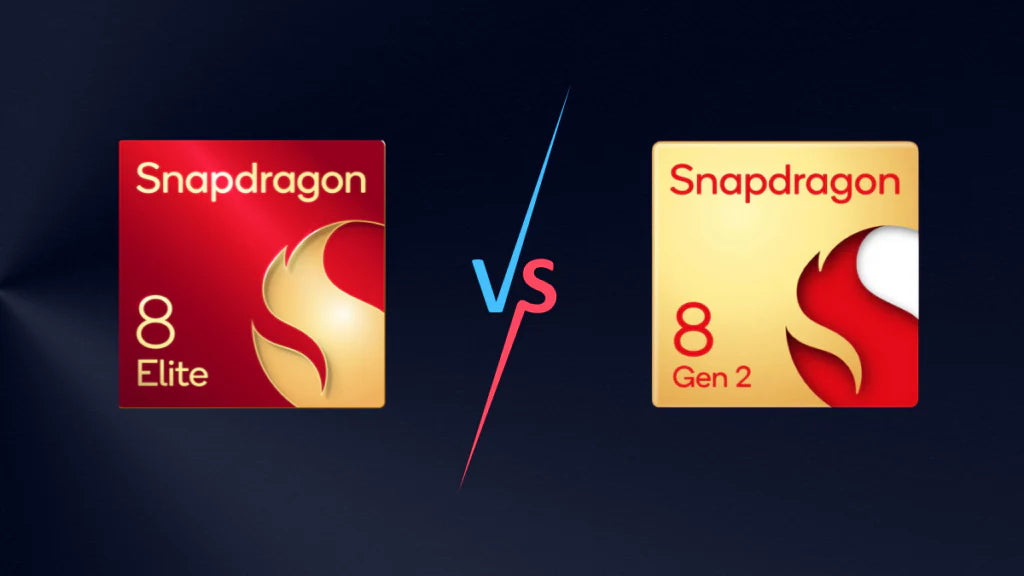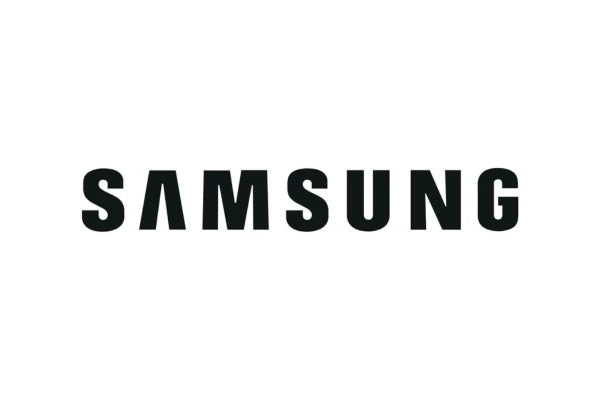
Snapdragon 8 Elite Gen 5 vs 8 Elite: Which Flagship Chip Wins in 2025?
Share
In 2025, the flagship SoC battle continues to heat up — especially between Snapdragon 8 Elite Gen 5 and the earlier Snapdragon 8 Elite. Both promise cutting-edge performance, but the question is: how much real difference is there? In this post, we’ll dig into specs, benchmarks, software (including Snapdragon 8 Elite Gen 5 OS and Snapdragon 8 Elite OS), and real-world use cases to see which chip (and OS environment) truly wins in 2025.
5Specs: Snapdragon 8 Elite Gen 5 vs Snapdragon 8 Elite
Using the comparison as a reference, here’s how the two chips stack up side by side:
| Component | Snapdragon 8 Elite (2024) | Snapdragon 8 Elite Gen 5 (2025) |
|---|---|---|
| Process Node | 3 nm (TSMC) | 3 nm (optimized N3E variant) |
| CPU | 2 × Oryon Prime @ 4.32 GHz + 6 × Oryon Perf @ 3.53 GHz | 2 × Oryon Gen 3 Prime @ 4.6 GHz + 6 × Oryon Gen 3 Perf @ 3.62 GHz |
| GPU | Adreno 830 (up to ~1.1 GHz) | Adreno 840 (up to ~1.2 GHz, with High-Performance Memory support) |
| NPU / AI Engine | Hexagon (≈ 45 TOPS) | Hexagon Gen 3 (≈ 55 TOPS, ~45% faster inference) |
| Modem | Snapdragon X80 5G | Snapdragon X85 5G (improved efficiency & throughput) |
| Memory / Storage | LPDDR5X up to 9.6 Gbps + UFS 4.0 | LPDDR5X up to 10.7 Gbps + UFS 4.1 |
| Camera ISP | Spectra (up to ~320MP / 8K video) | Spectra Gen 2 (improved AI processing, still up to same caps) |
From the above, several key points stand out:
- The prime and performance cores in Gen 5 are clocked significantly higher, combined with architectural improvements, giving a noticeable uplift in CPU performance.
- The GPU is improved not just in clock speed but in memory interface and feature support (especially for graphics and ray tracing).
- The NPU / AI engine is a major leap forward, which affects computational photography, on-device AI inference, and advanced features.
- Gen 5 also brings a more efficient modem and faster memory / storage support, which helps in data-heavy workloads.
Given these improvements, one can reasonably expect a performance advantage for the Gen 5 chip over the Snapdragon 8 Elite.
Benchmark Breakdown & Performance Gains
| Benchmark | Snapdragon 8 Elite | Snapdragon 8 Elite Gen 5 | Approx % Gain |
|---|---|---|---|
| AnTuTu v10 (Total) | 2,719,964 | 3,749,435 | +38 % |
| Geekbench 6 (Single-Core) | 3,055 | 3,834 | +26 % |
| Geekbench 6 (Multi-Core) | 9,723 | 12,396 | +24 % |
| 3D Mark WildLife Extreme | ~8,492 | ~11,000 | +25 % |
| GFXBench (Manhattan) | 120 fps | 148 fps | +23 % |
These numbers underline that Snapdragon 8 Elite Gen 5 holds a solid lead in both CPU and GPU domains. The margin isn’t trivial — you’re looking at roughly 20–40% improvements in many synthetic workloads. However, benchmarks alone don’t tell the full story — sustained performance, thermal behavior, and software integration all matter.
Software & OS: Snapdragon 8 Elite Gen 5 OS vs Snapdragon 8 Elite OS
Hardware is one thing; the OS environment and driver / firmware support are another. Even the best chip can be held back by poor software. Let’s examine how Snapdragon 8 Elite Gen 5 OS and Snapdragon 8 Elite OS setups might differ and influence user experience.
Optimized Drivers & Out-of-the-Box Performance
Devices built around Snapdragon 8 Elite Gen 5 OS are expected to ship with firmware and drivers tailored to the new architecture — better power curves, GPU / NPU scheduling tuned for Gen 5 features, memory controllers optimized for higher bandwidth, and so on.
In contrast, Snapdragon 8 Elite OS devices have matured software stacks, stable drivers, and proven profiles, but they inherently can’t exploit the new hardware headroom that Gen 5 offers. That means even with good software, some performance headroom remains unused.
AI, Computational Features, & OS Integration
One of the key strengths of the Gen 5 chip is its upgraded NPU / AI engine (≈ 55 TOPS vs 45 TOPS). This allows Snapdragon 8 Elite Gen 5 OS to enable more complex on-device AI tasks: e.g., real-time image editing, more sophisticated computational photography, model inference, user-context features, and smarter system optimizations.
On Snapdragon 8 Elite OS devices, these features still exist, but they may be limited in scale, or forced to run at lower efficiency or lower compute budgets.
Feature Support & Longevity
Because Gen 5 introduces various enhancements (higher memory bandwidth, more robust GPU features, better instruction sets, etc.), Snapdragon 8 Elite Gen 5 OS platforms are likely to support newer APIs or rendering techniques that older chips cannot. Over time, developers will optimize for the newer architecture, further widening the gap.
Additionally, devices with Snapdragon 8 Elite Gen 5 OS may receive firmware / driver updates for longer — because the chipset is newer and more future-facing. Meanwhile, Snapdragon 8 Elite OS devices, though still competent, might hit ceilings earlier in terms of OS upgrades, driver support, or compatibility with newer software features.
Thermal & Power Management in the OS
Because Gen 5 is built on TSMC’s optimized N3E, it has better power efficiency headroom. A Snapdragon 8 Elite Gen 5 OS environment can push dynamic voltage and frequency scaling more aggressively, and adopt more fine-grained power states.
In Snapdragon 8 Elite OS devices, the software may already be well-tuned, but it can’t take advantage of the extra margins that Gen 5 provides. So during heavy use (gaming, AI tasks), the Gen 5 environment will typically throttle less, maintain higher sustained performance, or better manage background tasks — giving a more consistent experience. This difference is also noticeable in refurbished OnePlus phones in India, where optimized software and efficient Snapdragon chips help deliver flagship-grade performance without compromising on stability or longevity.
Real-World Use & Decision Factors
Let’s break down how these chips perform in various real-world usage cases, and which one you should favor depending on your priorities in 2025.
Everyday Tasks & UI Responsiveness
Both chips deliver excellent experience in daily tasks like browsing, streaming, social media, messaging, and navigation. Even Snapdragon 8 Elite OS devices handle these effortlessly. But on edge cases — launching large apps, multitasking heavy workloads, large file operations — Snapdragon 8 Elite Gen 5 OS will feel noticeably more responsive.
Gaming & Extended Load
This is where Gen 5 shines:
- The GPU and memory enhancements give higher frame rates, better stability, and more headroom.
- During extended gaming sessions, the improved power efficiency and better thermal management in Snapdragon 8 Elite Gen 5 OS setups will reduce throttling and maintain higher average performance.
- Games that push new rendering techniques, higher resolutions, or ray tracing may only be fully supported or optimized on Snapdragon 8 Elite Gen 5 OS platforms.
That said, Snapdragon 8 Elite OS still offers excellent gaming — for many users, it will be more than sufficient.
Camera, AI & Multimedia
The upgraded NPU, faster memory, and newer ISP in the Gen 5 architecture provide a boost in image processing, real-time filters, video rendering, AI-based enhancements, and future computational photography features. In Snapdragon 8 Elite Gen 5 OS, OEMs and app developers can lean more into these capabilities.
Snapdragon 8 Elite OS devices will continue to deliver solid results, but may lag behind on cutting-edge features or new AI-based camera modes.
Battery Life & Efficiency
Gen 5 offers power efficiency improvements that translate to additional battery runtime — e.g. about 1 hour and 48 minutes more video playback compared to a comparable device using Snapdragon 8 Elite. That’s a meaningful gain, especially for heavy users.
Because Snapdragon 8 Elite Gen 5 OS devices are designed with this headroom, they can better allocate power and deliver battery benefits in real-world mixed use (standby, moderate load, bursts). Snapdragon 8 Elite OS devices are efficient too — but the margin gives Gen 5 an advantage in power-constrained scenarios. This efficiency boost is especially valuable for users considering refurbished Samsung phones in India, where battery health and power optimization play a key role in maintaining flagship-level performance even after long-term use.
Verdict: Which Flagship Chip Wins in 2025?
Based on the comparative specs, benchmarks, software integration, and real-world considerations:
- Snapdragon 8 Elite Gen 5 is the superior chip for 2025. Its architectural improvements, higher clocks, enhanced GPU/NPU, and better memory subsystem give it a clear edge over Snapdragon 8 Elite.
- When paired with Snapdragon 8 Elite Gen 5 OS, this advantage is fully unlocked — the OS and drivers can tap into the extra headroom, deliver sustained performance, and support future features.
- Snapdragon 8 Elite OS remains no slouch: for many users, it will deliver excellent performance even in 2025. But its ceiling is lower, and it may age faster in supporting new features or heavy workloads.
- If you’re buying a new flagship in 2025, go for a device running Snapdragon 8 Elite Gen 5 OS. If you already have a device with Snapdragon 8 Elite OS, it remains viable — unless your usage pattern demands that extra performance and efficiency boost.



